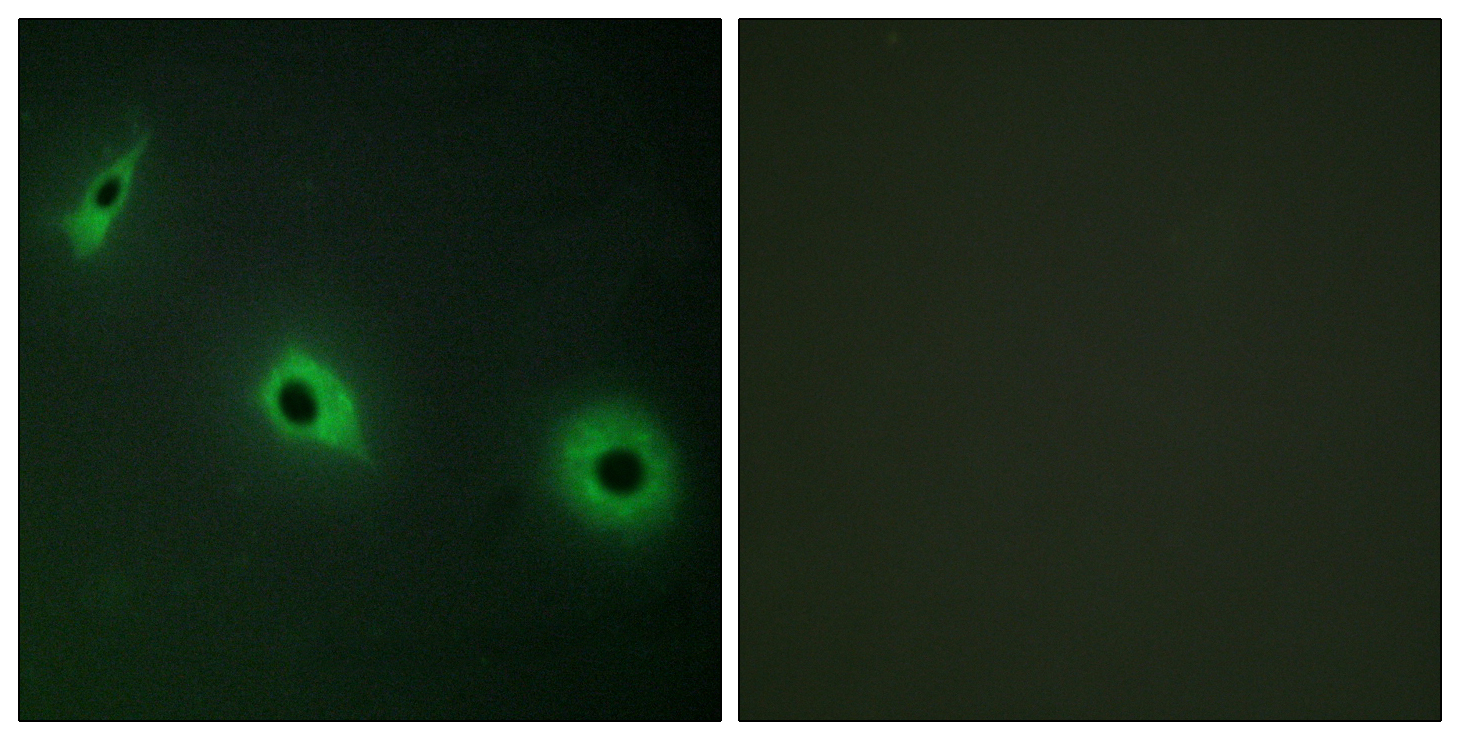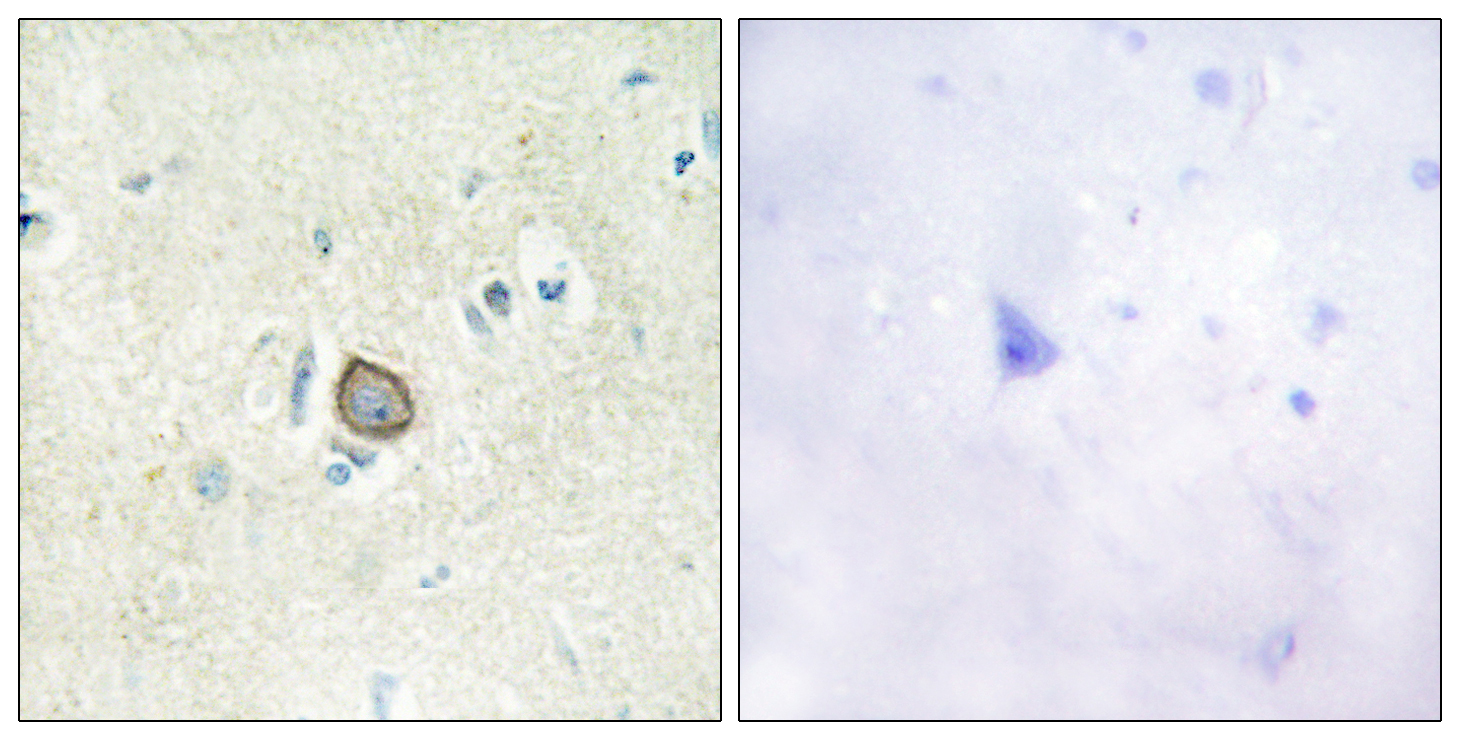CDHF11 Polyclonal Antibody
- Catalog No.:YT0826
- Applications:IHC;IF;ELISA
- Reactivity:Human;Rat;Mouse;
- Target:
- CELSR3
- Gene Name:
- CELSR3
- Protein Name:
- Cadherin EGF LAG seven-pass G-type receptor 3
- Human Gene Id:
- 1951
- Human Swiss Prot No:
- Q9NYQ7
- Mouse Swiss Prot No:
- Q91ZI0
- Immunogen:
- The antiserum was produced against synthesized peptide derived from human CELSR3. AA range:91-140
- Specificity:
- CDHF11 Polyclonal Antibody detects endogenous levels of CDHF11 protein.
- Formulation:
- Liquid in PBS containing 50% glycerol, 0.5% BSA and 0.02% sodium azide.
- Source:
- Polyclonal, Rabbit,IgG
- Dilution:
- IHC 1:100 - 1:300. IF 1:200 - 1:1000. ELISA: 1:20000. Not yet tested in other applications.
- Purification:
- The antibody was affinity-purified from rabbit antiserum by affinity-chromatography using epitope-specific immunogen.
- Concentration:
- 1 mg/ml
- Storage Stability:
- -15°C to -25°C/1 year(Do not lower than -25°C)
- Other Name:
- CELSR3;CDHF11;EGFL1;FMI1;KIAA0812;MEGF2;Cadherin EGF LAG seven-pass G-type receptor 3;Cadherin family member 11;Epidermal growth factor-like protein 1;EGF-like protein 1;Flamingo homolog 1;hFmi1;Multiple epidermal growth factor-
- Molecular Weight(Da):
- 358kD
- Background:
- This gene belongs to the flamingo subfamily, which is included in the cadherin superfamily. The flamingo cadherins consist of nonclassic-type cadherins that do not interact with catenins. They are plasma membrane proteins containing seven epidermal growth factor-like repeats, nine cadherin domains and two laminin A G-type repeats in their ectodomain. They also have seven transmembrane domains, a characteristic feature of their subfamily. The encoded protein may be involved in the regulation of contact-dependent neurite growth and may play a role in tumor formation. [provided by RefSeq, Jun 2013],
- Function:
- function:Does not seem to be involved in anion transport.,function:Receptor that may have an important role in cell/cell signaling during nervous system formation.,similarity:Belongs to the G-protein coupled receptor 2 family. LN-TM7 subfamily.,similarity:Belongs to the SLC26A/SulP transporter (TC 2.A.53) family.,similarity:Contains 1 GPS domain.,similarity:Contains 1 laminin EGF-like domain.,similarity:Contains 1 STAS domain.,similarity:Contains 2 laminin G-like domains.,similarity:Contains 8 EGF-like domains.,similarity:Contains 9 cadherin domains.,tissue specificity:Ubiquitous. Highest levels in kidney and pancreas. Lower expression in heart, skeletal muscle, liver and placenta. Also found in lung and brain.,
- Subcellular Location:
- Cell membrane; Multi-pass membrane protein.
- Expression:
- Brain,Cord blood,Duodenum,Epithelium,Kidney,Uterus,
- June 19-2018
- WESTERN IMMUNOBLOTTING PROTOCOL
- June 19-2018
- IMMUNOHISTOCHEMISTRY-PARAFFIN PROTOCOL
- June 19-2018
- IMMUNOFLUORESCENCE PROTOCOL
- September 08-2020
- FLOW-CYTOMEYRT-PROTOCOL
- May 20-2022
- Cell-Based ELISA│解您多样本WB检测之困扰
- July 13-2018
- CELL-BASED-ELISA-PROTOCOL-FOR-ACETYL-PROTEIN
- July 13-2018
- CELL-BASED-ELISA-PROTOCOL-FOR-PHOSPHO-PROTEIN
- July 13-2018
- Antibody-FAQs
- Products Images

- Immunofluorescence analysis of HepG2 cells, using CELSR3 Antibody. The picture on the right is blocked with the synthesized peptide.

- Immunohistochemistry analysis of paraffin-embedded human brain tissue, using CELSR3 Antibody. The picture on the right is blocked with the synthesized peptide.



